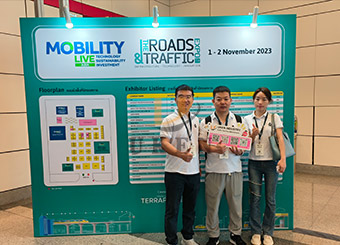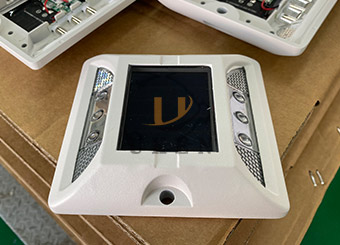Solar street lights have emerged as a revolutionary and sustainable lighting solution in recent years. As more people and communities look to embrace energy – efficient and eco – friendly options, understanding the ins and outs of solar street lights becomes crucial. Here, we address some of the most frequently asked questions to help you make well – informed decisions.
Solar street lights are powered by the sun, a renewable and virtually inexhaustible energy source. During the day, the solar panels absorb sunlight and convert it into electricity. This electricity is then stored in batteries for use at night. By relying on solar energy, these lights significantly reduce our dependence on non – renewable energy sources like coal and natural gas. For example, a single solar street light can save hundreds of kilowatt – hours of grid – electricity annually, depending on its usage and location.
While the initial purchase and installation of solar street lights may be costlier than traditional street lights, the long – term savings are substantial. There are no ongoing electricity bills since they run on solar power. Maintenance costs are also typically lower. The durable design of solar street lights means fewer component failures. LED bulbs, which are commonly used in these lights, have a long lifespan and require less frequent replacement compared to traditional bulbs.
One of the biggest advantages of solar street lights is their independence from the electrical grid. This makes them highly reliable, especially in remote areas where access to electricity is limited or unreliable. During power outages in urban or rural areas, solar street lights continue to function, ensuring safety and security. For instance, in mountainous regions where laying electrical cables is difficult and expensive, solar street lights provide a practical and reliable lighting solution.
Installing solar street lights is a breeze. They require minimal wiring as they don’t need to be connected to the grid. This makes them suitable for a wide range of locations, from rural roads and pathways to parks and parking lots. Their flexibility also allows for easy relocation or expansion. If a community decides to change the layout of a park or expand a parking lot, solar street lights can be moved or additional units can be added without major infrastructure changes.
Solar street lights play a significant role in reducing carbon emissions. By using solar energy instead of grid – electricity, which is often generated from fossil fuels, they help to cut down on greenhouse gas emissions. For example, if an entire neighborhood switches to solar street lights, it can lead to a substantial reduction in the area’s overall carbon footprint. This contributes to a cleaner and more sustainable environment.
Modern solar street lights can be integrated with smart technologies. Motion sensors can be installed so that the lights only turn on when there is movement, saving energy. Dimming options allow for adjusting the brightness based on the time of night or the level of activity in the area. Remote monitoring systems enable operators to keep track of the lights’ performance, check battery levels, and receive alerts in case of any issues. These smart features not only enhance energy efficiency but also provide a more customized lighting experience.
At the core of a solar street light is the solar cell. A solar cell is made of a semiconductor material, usually crystalline silicone. It consists of layers of negatively – charged electrons and positively charged spaces. When sunlight passes through these solar cells, the photons in the light activate the electrons, pushing them into the positive spaces. This movement of electrons forms an electrical circuit, and as they pass through this circuit, direct current (DC) electricity is generated. Multiple solar cells are grouped together to form a solar panel, which increases the amount of electricity that can be generated.
The solar panel is connected to the battery through a charge controller. The charge controller plays a vital role in protecting the battery. It regulates the voltage of the electricity flowing from the solar panel to the battery. This ensures that the battery is not over – charged, which can damage the battery and reduce its lifespan. Additionally, at night when the solar panels stop producing electricity, the charge controller prevents the backflow of current from the battery through the solar cell. This helps to preserve the battery’s charge.
During the day, the solar panels are actively generating electricity, which is stored in the battery. As night falls, photoreceptors on the solar lamp sense the lack of sunlight. Once the light level drops below a certain threshold, the photoreceptors trigger the system to start supplying power from the battery to the light source, usually an LED. This process provides illumination throughout the night. Then, at daybreak, as the sunlight intensity increases, the photoreceptors detect the light and automatically shut off the light, allowing the solar panels to start charging the battery again.
On average, a well – designed and properly maintained solar street light can have a lifespan of 10 to 20 years. However, this lifespan can be affected by various factors such as the quality of components, maintenance practices, and environmental conditions. High – quality components are more likely to withstand wear and tear over time, while regular maintenance can ensure that the system continues to function optimally.
Regular maintenance is essential to ensure the longevity and optimal performance of solar street lights. This includes cleaning the solar panels regularly to remove dust, dirt, and debris. Clean solar panels can absorb sunlight more efficiently, increasing the amount of electricity generated. Checking and replacing faulty components, such as a damaged solar panel or a malfunctioning charge controller, is also crucial. Monitoring the battery’s health, including checking its charge level and voltage, can help identify when a battery needs to be replaced. By following these maintenance practices and using high – quality components, the lifespan of solar street lights can be maximized.
The first step in choosing a solar street light is to assess your specific lighting requirements. Determine the brightness levels and coverage area needed. For a small pathway, a lower – wattage light with a narrow beam may be sufficient. In contrast, a large parking lot or a busy intersection will require a higher – wattage light with a wider beam spread. Calculate the appropriate lumen output based on the area to be lit. A general rule of thumb is that for outdoor lighting, you may need around 10 – 20 lumens per square foot, but this can vary depending on the application.
Opt for solar street lights with sufficient battery capacity. Consider the local weather patterns. In areas with frequent cloudy days, you’ll need a larger battery capacity to ensure that the light can operate throughout the night. A battery with a capacity of at least 100 – 150Ah may be suitable for average – use solar street lights in regions with some cloud cover. Calculate the battery capacity based on the wattage of the light and the number of hours it needs to operate at night.
The efficiency of the solar panels is crucial. Look for high – quality monocrystalline or polycrystalline solar panels. Monocrystalline solar panels are known for their high efficiency, often ranging from 15% to 22%. Polycrystalline solar panels are slightly less efficient, with efficiencies in the 13% to 18% range. However, they are usually more cost – effective. Consider the amount of sunlight your location receives and choose a panel that can efficiently convert that sunlight into electricity.
Ensure that the solar street light can withstand outdoor conditions. It should be able to endure extreme temperatures, moisture, and dust. Look for lights made of high – quality materials such as aluminum alloy for the housing, which is lightweight yet durable and resistant to corrosion. The solar panels should be encased in a protective glass that is both shatter – resistant and easy to clean. A good solar street light should be rated for outdoor use, with an appropriate IP (Ingress Protection) rating, such as IP65 or higher, which indicates resistance to dust and water.
Consider solar street lights with intelligent features. Motion sensors can save energy by only turning on the light when there is movement in the area. Dimming capabilities allow you to adjust the brightness according to the time of night or the level of activity. Smart control systems enable you to monitor and manage the lights remotely. For example, you can set different schedules for different lights in a large area or receive alerts if a light malfunctions. These features not only enhance energy efficiency but also provide added convenience.
Research customer reviews and seek recommendations from trusted sources. Look for reviews on online platforms, industry forums, or ask for references from other customers who have installed solar street lights. Pay attention to reviews that mention the light’s performance over time, its durability, and the quality of customer service provided by the manufacturer. A product with consistently positive reviews is more likely to be a reliable choice.
Solar lights are designed to charge even on cloudy or rainy days, although the charging efficiency is lower compared to sunny days. Solar panels can capture and convert both direct and indirect sunlight into energy. The diffused sunlight on cloudy days still contains photons that can be used by the solar cells to generate electricity. However, extended periods of cloudy or rainy weather can affect the charging time and overall performance. In such cases, the battery may not reach a full charge, and the light may not be able to operate at its maximum brightness or for as long as on days with enough sunlight.
Solar street lights offer numerous advantages, from energy efficiency and cost savings to environmental benefits. Understanding how they work, their lifespan, and how to choose the right one for your needs is essential. By considering all these factors, you can make an informed decision and contribute to a more sustainable and well – lit environment. Whether for a small community project or a large – scale infrastructure upgrade, solar street lights are a viable and promising lighting solution.





